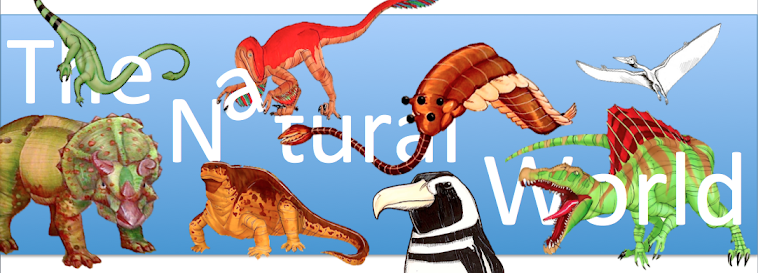Hello again! Thank you to our guessers for this week: surprisingly, one of you got it exactly right! Congratulations to Kristie C., who guessed this weeks mystery animal 100% correct! The correct animal was Pakicetus, an ancient ancestor of the cetaceans, or the whales, dolphins and porpoises. Around 53 MYA, Pakicetus lived in a world that was gradually becoming what we see today. At this time, what we now know as India was its own special island continent, moving steadily northwards until, eventually, India crashed into Asia. This crash resulted in the largest mountains we have today, the Himalayas.
However, 53 MYA, during the Eocene Epoch, India hadn't quite reached Asia, a small sea separating the two, the remains of the vast Tethys Ocean. The Tethys Sea was high in saline, which is incredibly good for life. Microscopic organisms like plankton flourished, sending reverberations up the food chain, all of the way to the fish, which exploded in numbers as well. And on the shore of this Tethys Sea, in what today is Pakistan, stood Pakicetus.
As Pakicetus watched the gread abundnace of fish in the waters, he began to take short fishing trips into the water. Over millennia, as Pakicetus took more and more fishing trips, of longer and longer duration, adaptations that proved beneficial for hunting fish in the water occurred, like a more streamlined shape, most likely webbed feet, and nostrils placed further back on the head. Over a few million years, Pakicetus evolved into another ancient whale, called Ambulocetus.
Check back in a few hours for your next "What Is It?" challenge? I promise you, after the last two, this one should seem like a piece of cake! See you all then!

No comments:
Post a Comment